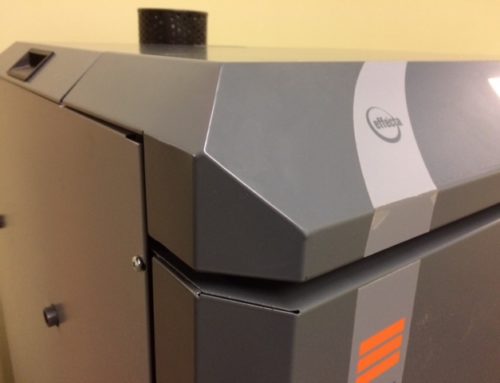There are a lot of people who bought outdoor wood boilers in the past 10-15 years, and they’re now thinking about or needing to change boilers. Should they stick with an outdoor boiler, or switch to an indoor boiler?
They answer is most often: its much better off to switch to an indoor boiler.
First, an indoor boiler is much more efficient than an outdoor boiler. It is not subject to extreme cold. It is not exposed to the wind. The water does not have to travel through underground pipes where heat is lost. Because the indoor system doesn’t lose so much heat to the air and ground you will use less fuel, probably a lot less. This will not only save money, it will decrease the wear and tear on your boiler and the rest of your heating system.
Second, outdoor boilers must contain antifreeze if there is any chance of freeze-up. Antifreeze is costly, and it increases the viscosity of the system fluid. Higher viscosity fluid requires a bigger, more powerful circulator. Without a big enough circulator, the fluid won’t travel fast enough. An under-powered circulator will also burn out quicker.
Third, indoor boilers are almost always suited for complete integration with a pressurized heating system. Pressurized heating systems are virtually ubiquitous for indoor boilers. Outdoor boilers are usually unpressurized. This can lead to a shorter lifespan if not treated with specialized chemicals which have to be periodically replaced.
There are situations where an indoor boiler is not such a good fit. That tends to be due to lack of space in the basement, or a big problem in installing a chimney.
For commercial and government building retrofits, the fossil fuel boiler is often left in place. If this is the case with your project, you will most likely have a lack of space for a pellet boiler and storage inside the “building envelope”. One option to consider is to have a “indoor” pellet boiler installed in an insulated shipping container complete with built in pellet storage. The container is configured off site, brought to the site ready to go, with just some wiring and simple piping to complete the project. This can be the most cost effective approach for bigger projects that have space issues.





Hey George, that’s a very informative blog you posted informing about boilers. Keep up the good writing.
Thanks, Greg. Much appreciated!